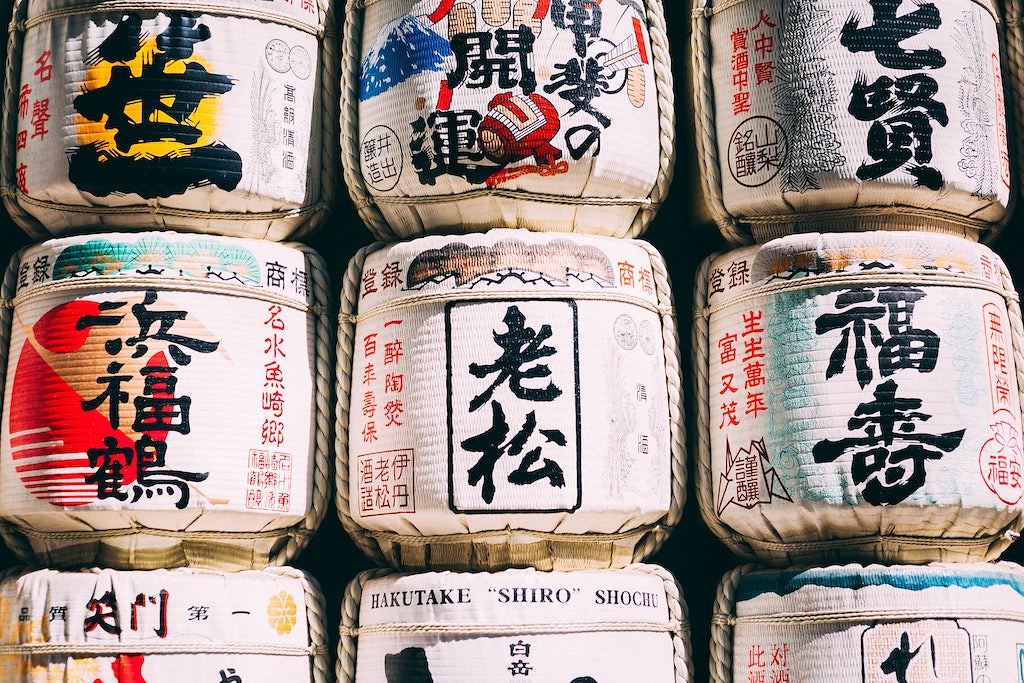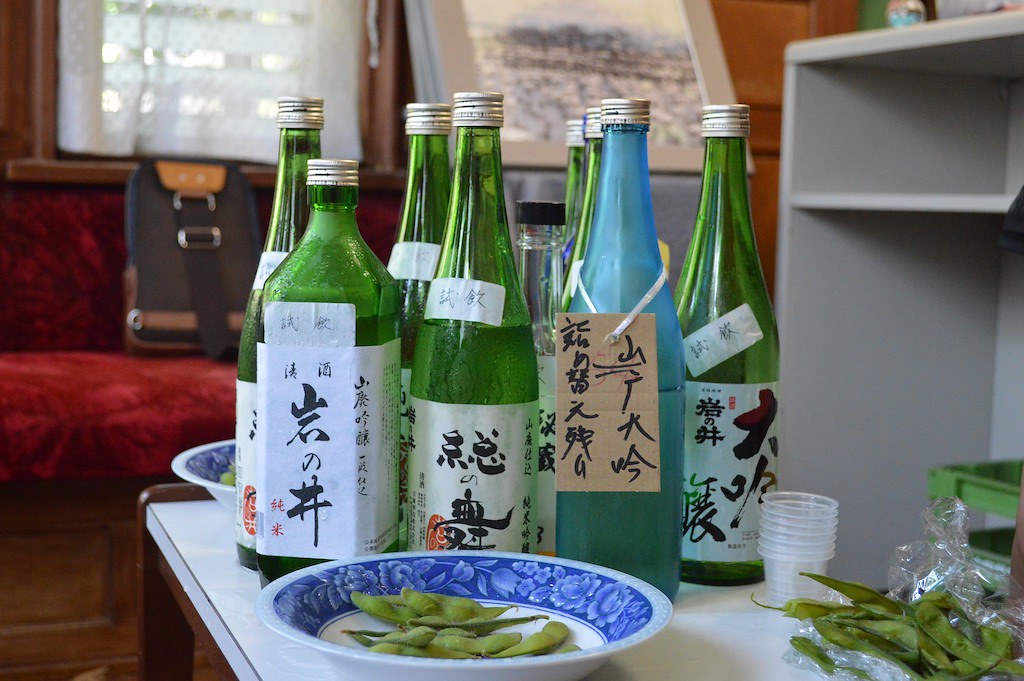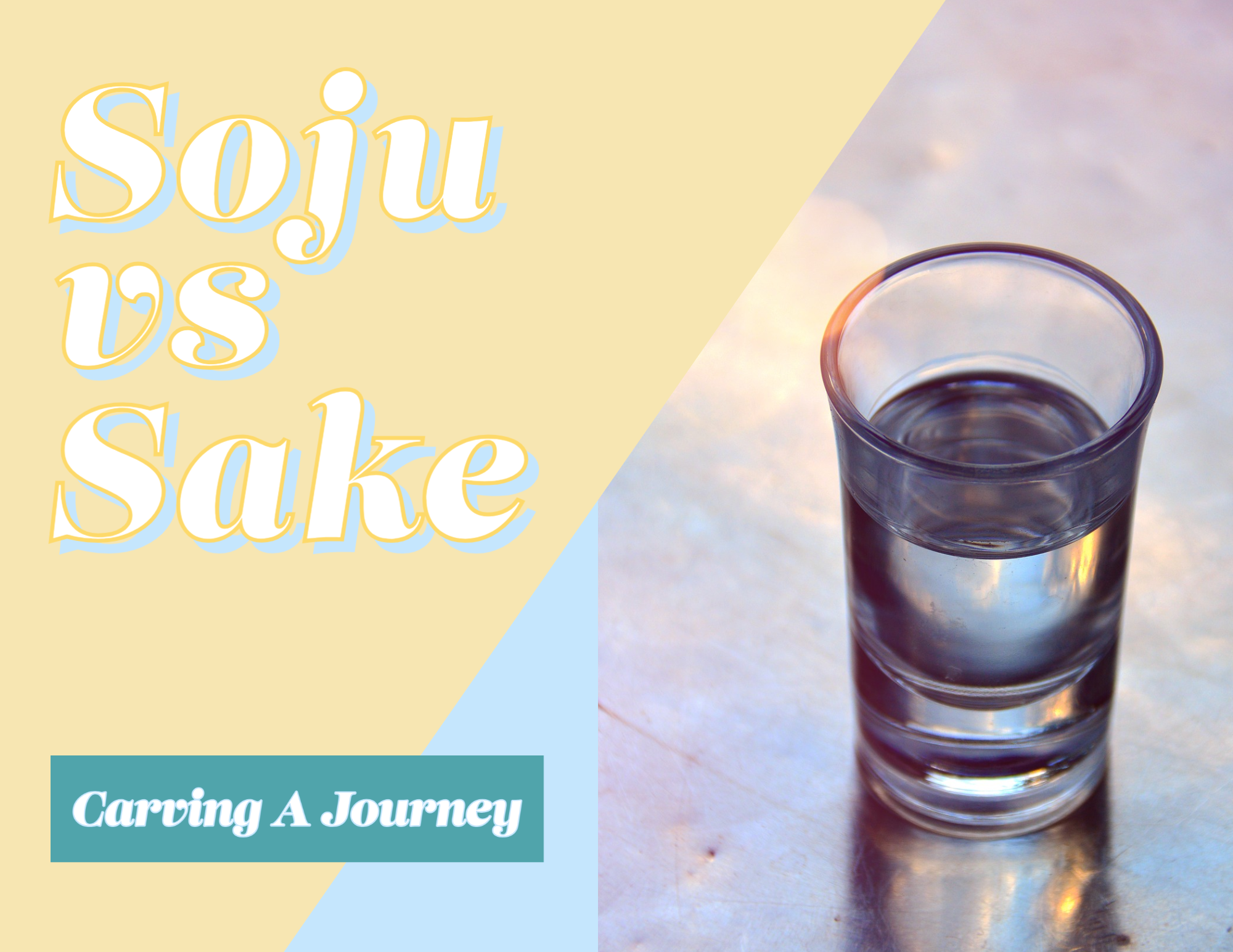As the world seems to get smaller and smaller because of social media and modern travel, different ethnic and cultural foods have become more popular and readily available for people to try. But, as the world of food and drink expands, sometimes people confuse similar foods from two cultures by accident. In the past, we discussed the differences between kimbap and sushi, as well as tamari and soy sauce. Now, let’s learn about two alcoholic drinks from East Asia that are gaining popularity in the west–soju vs sake: what is the difference?
What Is Soju?
Soju is a clear distilled liquor from the Korean peninsula that is traditionally made from rice. Then, for a long time, Koreans started making soju from sweet potato, barley, tapioca, wheat, or any combination of the ingredients after distilling rice became banned during the 1960s due to rice shortages. Nowadays, the traditional distilling process of using rice has started making a comeback with the lifting of the rice distilling ban. The Korean government is actually pushing a lot to protect traditions and cultural heritage!

What Does Soju Taste Like?
Soju has a lightly sweet, light, and clean flavor that matches well with spicy and fatty foods. You will often see Koreans drinking shots of this distilled spirit with foods such as tteokbokki (spicy rice cakes), kimchi jjigae (kimchi stew), doenjang jjigae (soybean paste stew), and samgyeopsal (Korean pork belly barbecue). For many Koreans, they treat soju as a palate cleanser for these types of food.
For those who have never tried soju, many people refer to soju as ‘the Korean vodka’ because of its neutral and clean taste. Though they taste similar, soju contains about half the alcohol content of vodka– soju contains around 20% ABV, while vodka contains 40% ABV.
How to Enjoy Soju:
In South Korea, people most often drink soju straight as a shot with snacks or a meal. A typical shot glass holds between 1 to 1.5 ounces. On the other hand, a soju glass holds 1.7 ounces. In Korea, because soju is the most popular drink and shot (by far), they don’t even use the word “shot glass”–it is called “sojujan” (soju glass)!
Typically, when you order soju in South Korea, they bring the bottle to the table for you to enjoy. You then pour out your drinks yourself as you chat and eat. Also, you can buy soju at any convenience or grocery store in Korea for approximately $1.50. Then, if you want, you can drink at the park, sitting on the side of the street, walking around, and so on. In other countries such as the U.S., bartenders must pour out the shots individually based on liquor laws (in the county and state), and you cannot drink while wandering around public streets. Interesting difference in alcohol culture, right?

Cheers! Shots of Soju
While people typically drink soju as a shot, cocktails are becoming increasingly more popular. Most famously, people mix soju and beer to make ‘somaek.’ Other examples of soju cocktails are soju and tonic and soju caipirinha.
Another soju drink that is becoming increasingly popular is flavored soju. You can find flavored versions such as peach, grapefruit, grape, and more.
Now, let’s learn all about sake in our soju vs sake comparison!
What Is Sake?
Sake is a brewed alcoholic beverage from Japan made from rice. While many people state that sake is ‘rice wine,’ it is actually more like beer. Like beer, you make sake by steeping grains as you let them brew and ferment with yeast. What makes sake different from beer is:
- You use rice instead of grains such as hops, barley, and wheat.
- Beer typically contains approximately 4% ABV while sake contains approximately 16%.
- After letting it brew and ferment with yeast, you then ferment it a second time using koji mold*.
*Food Fact: Koji mold is commonly used in China, Korea, and Japan as a culture to help start the fermentation process in certain food products. Often, they use it with soybeans. The Koreans call it ‘nuruk’ and use it to make Makgeolli (Korean rice wine), soju, and sometimes soybean paste (doenjang). The Japanese use koji to make miso paste, soy sauce, and sake. The Chinese use it in things like soy sauce and Huangjiu (brewed wine made from grains).

Containers of Sake Stacked High
What Does Sake Taste Like?
When it comes to flavor, sake has a lot of versatility like wine and beer. You can enjoy different sake brands ranging from dry to sweet. Many people describe the flavor of sake as clean-tasting and slightly sweet. Then, there are nuances such as nutty or floral notes.
When drinking sake, if it has a white murky coloring, it is unfiltered. This means that the sake has rice solids that have not fermented and have not been filtered out. This type of sake is known as ‘nigori.’ The more common version outside of Japan is clear. This version has gone through a filtration process.
How to Enjoy Sake:
For the most part, good sake is best served at room temperature in Japan. In many restaurants (in and outside of Japan), you can order sake as cold, room temperature, and warm. When ordering sake, know that the warm options are typically sake brands that are on the cheaper side.
In America, a popular cocktail ‘party’ drink is a shot of sake with a glass of beer. Typically, you drop the entire shot glass of cheap sake into a larger glass of cheap beer before casually sipping (or chugging) the entire drink. While this is common in the United States, it is not in Japan. Actually, this cocktail didn’t come from the Japanese at all! Sake bombs were first invented by American soldiers in Japan during the years following World War II. If you want to read more about the origin of sake bombs you can look here.
Koreans invented mixing soju and beer, and enjoy doing so. For the Japanese, they think people are crazy for wasting perfectly good sake by putting it in beer. Thus, another big difference between soju and sake!
So, if you want to drink sake like the Japanese, sip on a nice warm temperature glass over an extended period. Also, don’t bother making cocktails or party drinks.

Green Bottles of Sake Lined Up
Soju vs Sake: A Summery
Style of Alcohol: In the end, soju is a Korean distilled spirit similar to that of vodka. On the other hand, sake is a Japanese brewed alcohol similar to beer.
Ingredients: Soju is usually made from sweet potato and tapioca, although the traditional rice method is making a comeback. Conversely, sake is made predominantly from rice and koji mold.
Flavor: Soju is clean and neutral in flavor. Because of soju’s neutral flavor, it tastes delicious with spicy and fatty foods. Sake is creamy, light, and refreshing, pairing nicely with yakitori, braised fish, and noodles.
Soju vs Sake: Which Do You Enjoy?
In the end, do you enjoy drinking Korean soju and Japanese sake? Also, what do you enjoy eating with these drinks? If so, we would love to hear about it in the comment section!
If you would like to read further articles similar to this topic, we listed some recipes and informative blog posts below!
Korean Soju Recipes:
- Korean Soju and Tonic Cocktail
- Soju Caipirinha Cocktail (Soju cocktail based on the Brazilian national drink)
Sake Related Article:
Food and Drink Comparison Articles:
In the end, if you have any questions or comments, you can also email us at [email protected]. And, finally, we would love to hear from you through our social media as well! You can follow us at @carvingajourney on Instagram, Twitter, Facebook, and Pinterest. Or, if you would like more articles like these, you can subscribe to our blog by joining our mailing list. We hope you enjoyed our learning about soju vs sake! Thank you so much for stopping by!
Carving A Journey is a participant in the Amazon Services LLC Associates Program, an affiliate advertising program designed to provide a means for sites to earn advertising fees by advertising and linking to Amazon.com. Although we may earn commissions for our endorsement, recommendation, testimonial, and/or link to any products or services from this website, these opinions are my own and I fully support these products.

